Fall Plants Intrigue FODMers
Twenty FODMers delighted in studying the plants of the preserve on a walk led by Dr. Elizabeth Wells on September 17, 2022. Many plants were dropping or ready to drop their seeds to start the next generation.
 |
| Dr. Elizabeth Wells All photos by Bob Veltkamp |
Some seeds, like the seeds of common milkweed (Asclepias syriaca), American burnweed (Erechtites hieraciifolius), narrow-leaf cattails (Typha latifolia) and wild lettuce (Lactuca virosa) are dispersed by the wind, Dr. Wells explained. Their “pappus” or white hairy tufts act like parachutes to send seeds afloat.
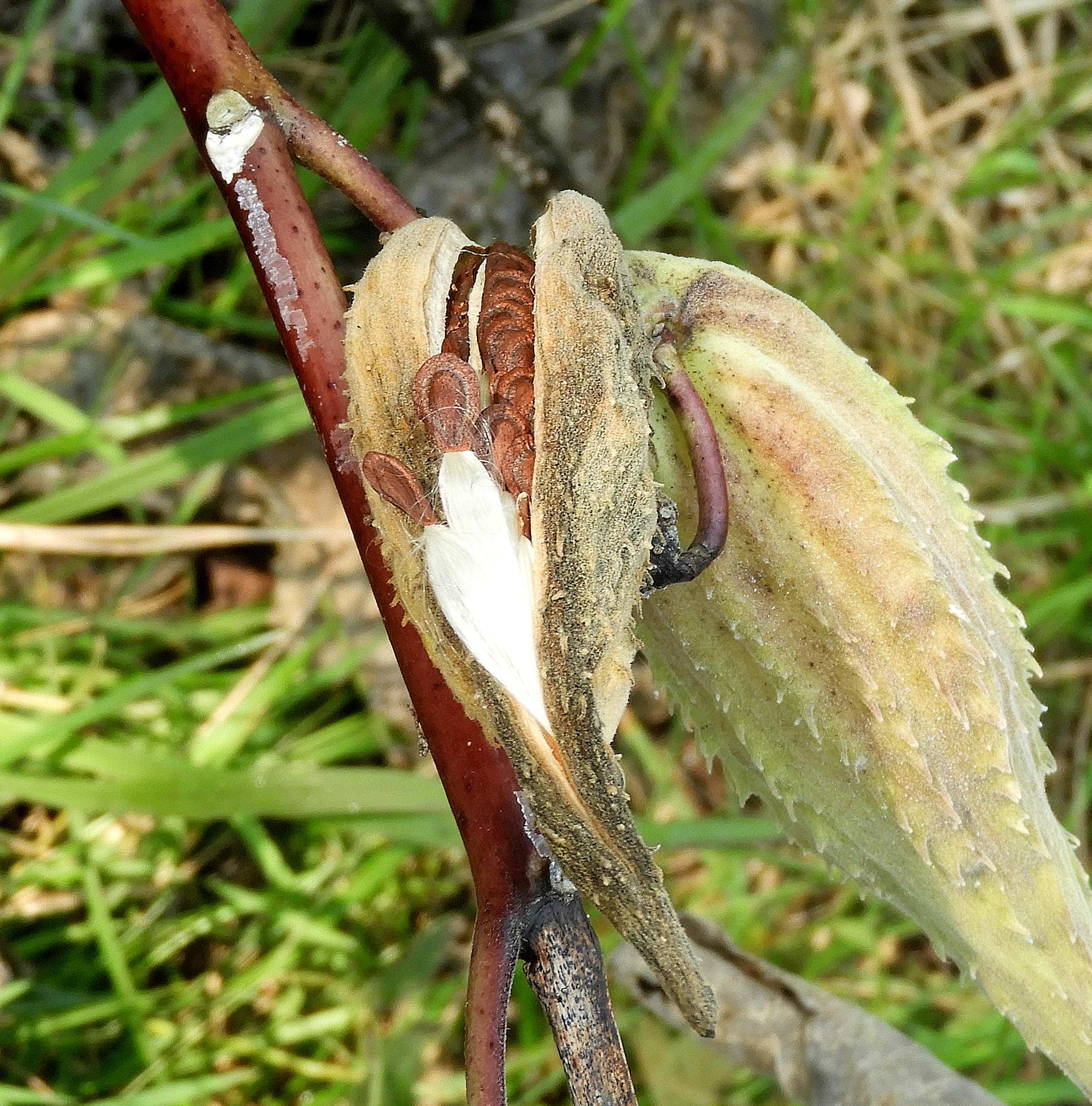 |
 |
|
| Common milkweed (Asclepias syriaca) |
American burnweed (Erechtites hieraciifolius) |
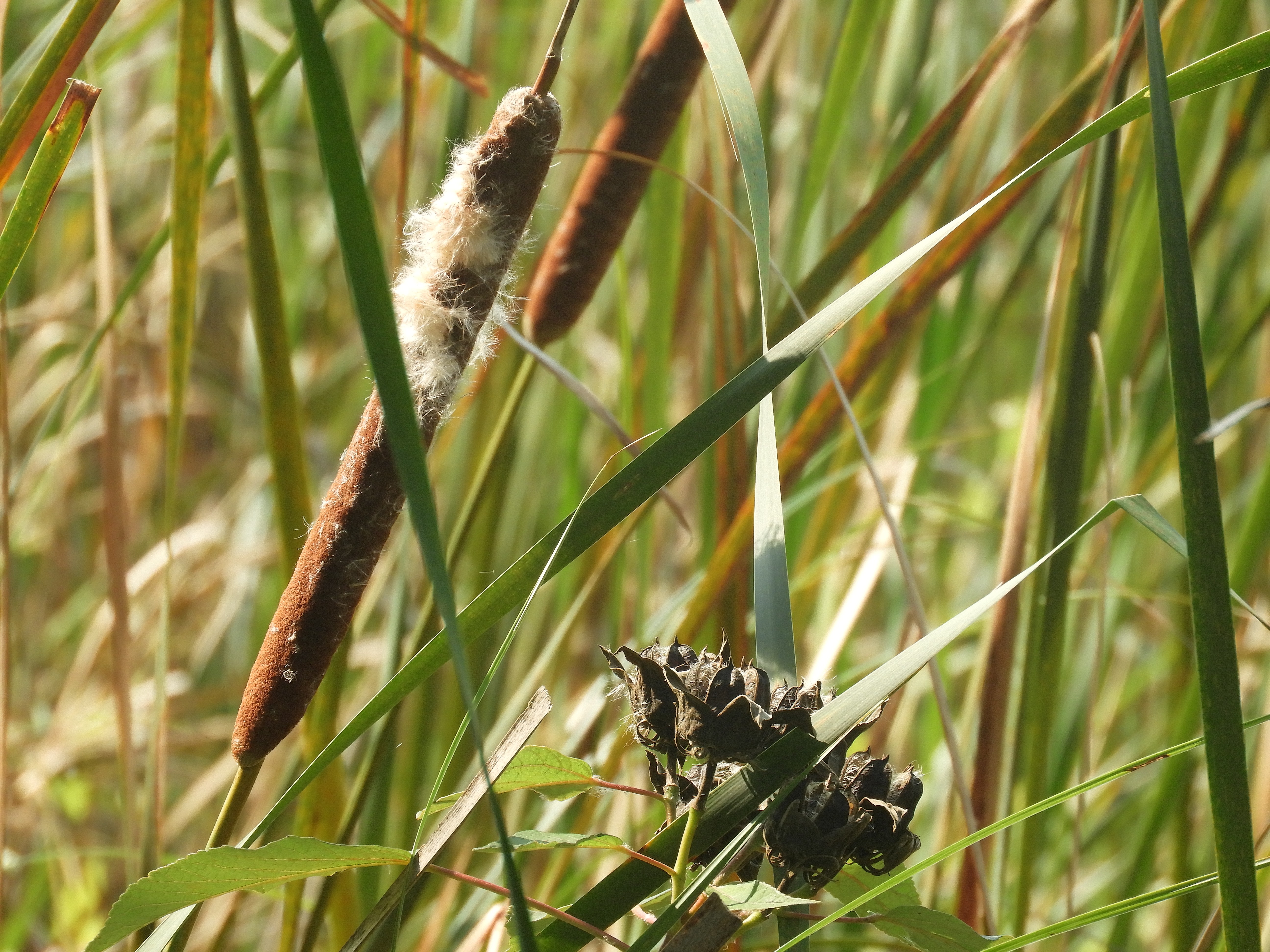 |
| Narrow-leaf cattail (Typha latifolia) |
Yellow blossoms brightened the landscape. The smooth beggar ticks (Bidens laevis) create brilliant yellow swaths across the marsh every autumn. Dodder (Cuscuta gronovii), a twining, spaghetti-like, yellow plant, twisted along the shoreline. Spatterdock or yellow pond lily (Nuphar advena) has a yellow golf-ball like flower. Nectaring bees were almost disappearing into the orangey-yellow jewelweed’s (Impatiens capensis) cone-shaped blossoms.
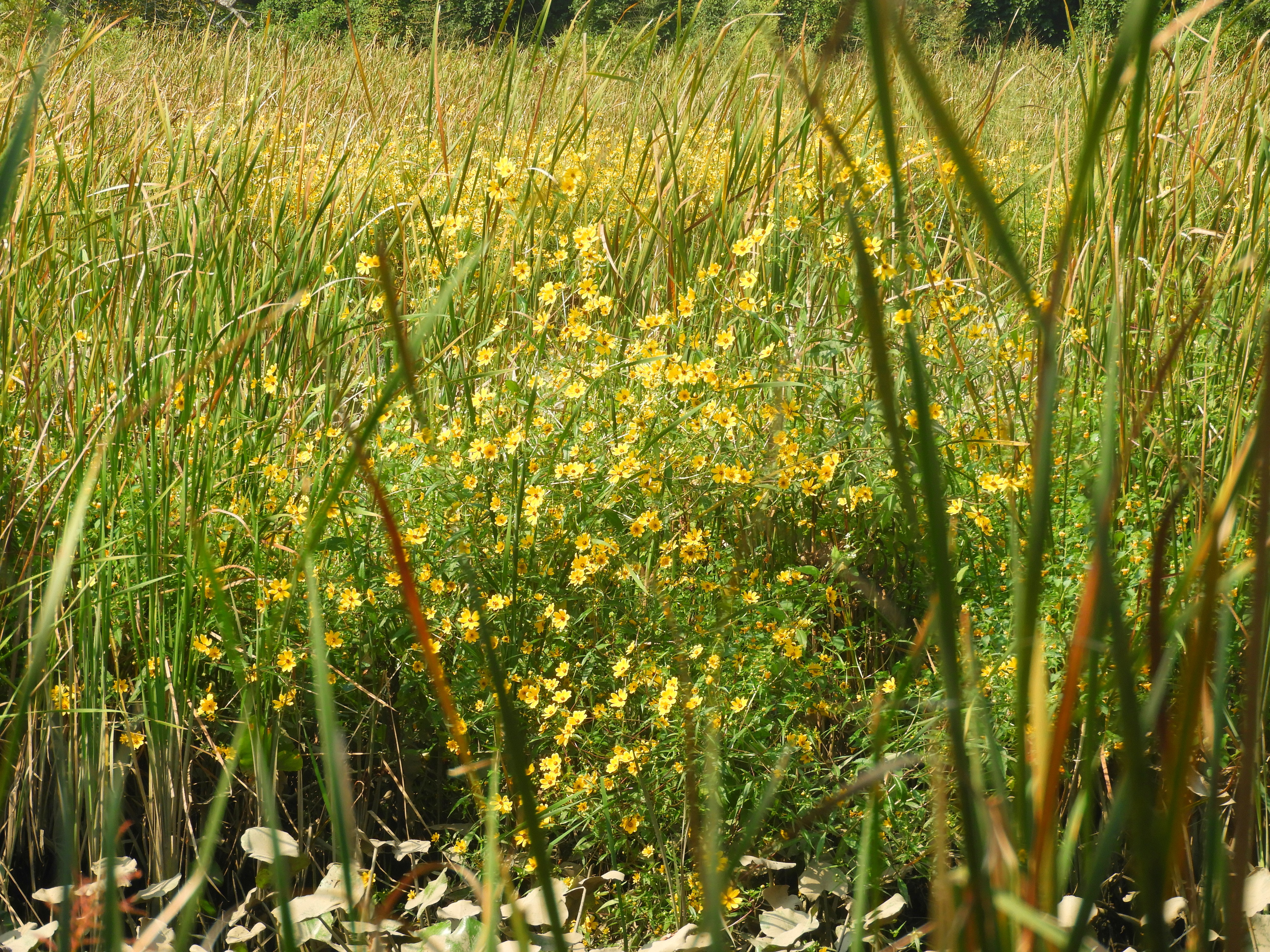 |
| Smooth beggar ticks (Bidens laevis) |
 |
 |
|
| Dodder (Cuscuta gronovii) | Spatterdock (Nuphar advena) |
Reds stood out too, like the smooth sumac’s (Rhus glabra) conically-shaped, lemon-scented drupes or fruits that pointed straight up. The leaves of silver maple trees (Acer saccharinum), Virginia creeper (Parthenocissus quinquefolia) and poison ivy (Toxicodendron radicans) were turning red, signaling that fall was underway. A black swallowtail butterfly (Papilio polyxenes) nectared on the cardinal flower (Lobelia cardinalis).
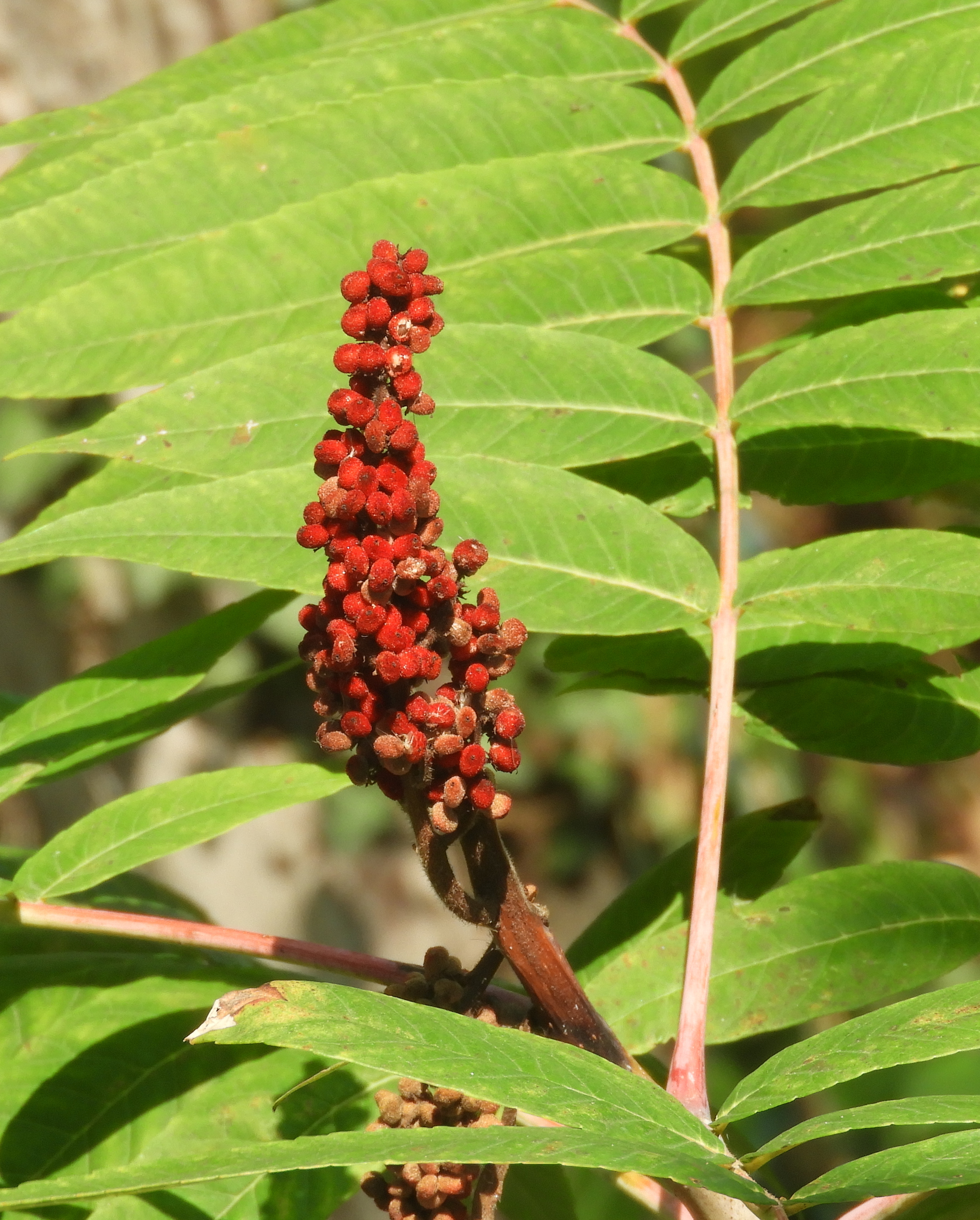 |
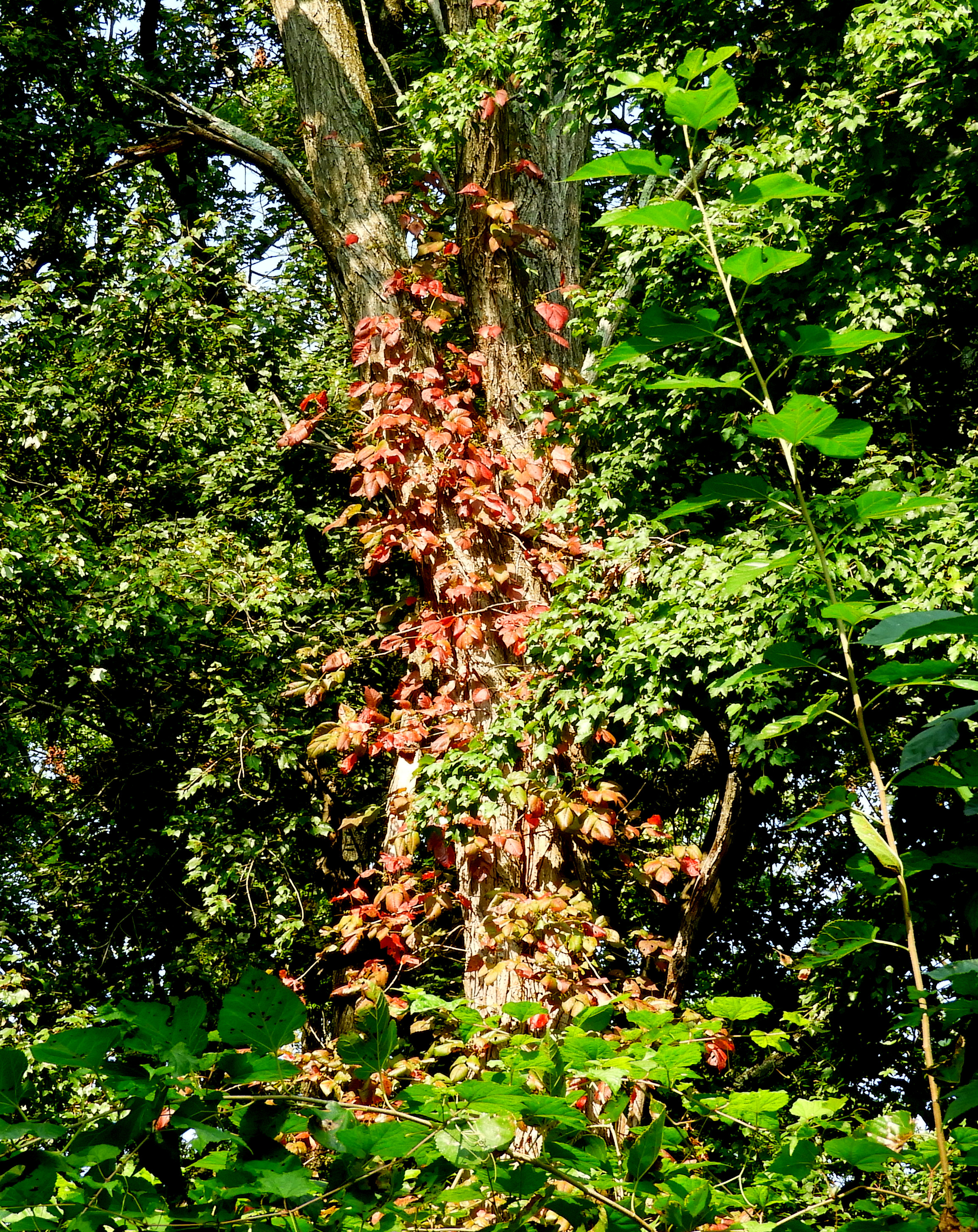 |
|
| Smooth sumac (Rhus glabra) | Poison ivy (Toxicodendron radicans) |
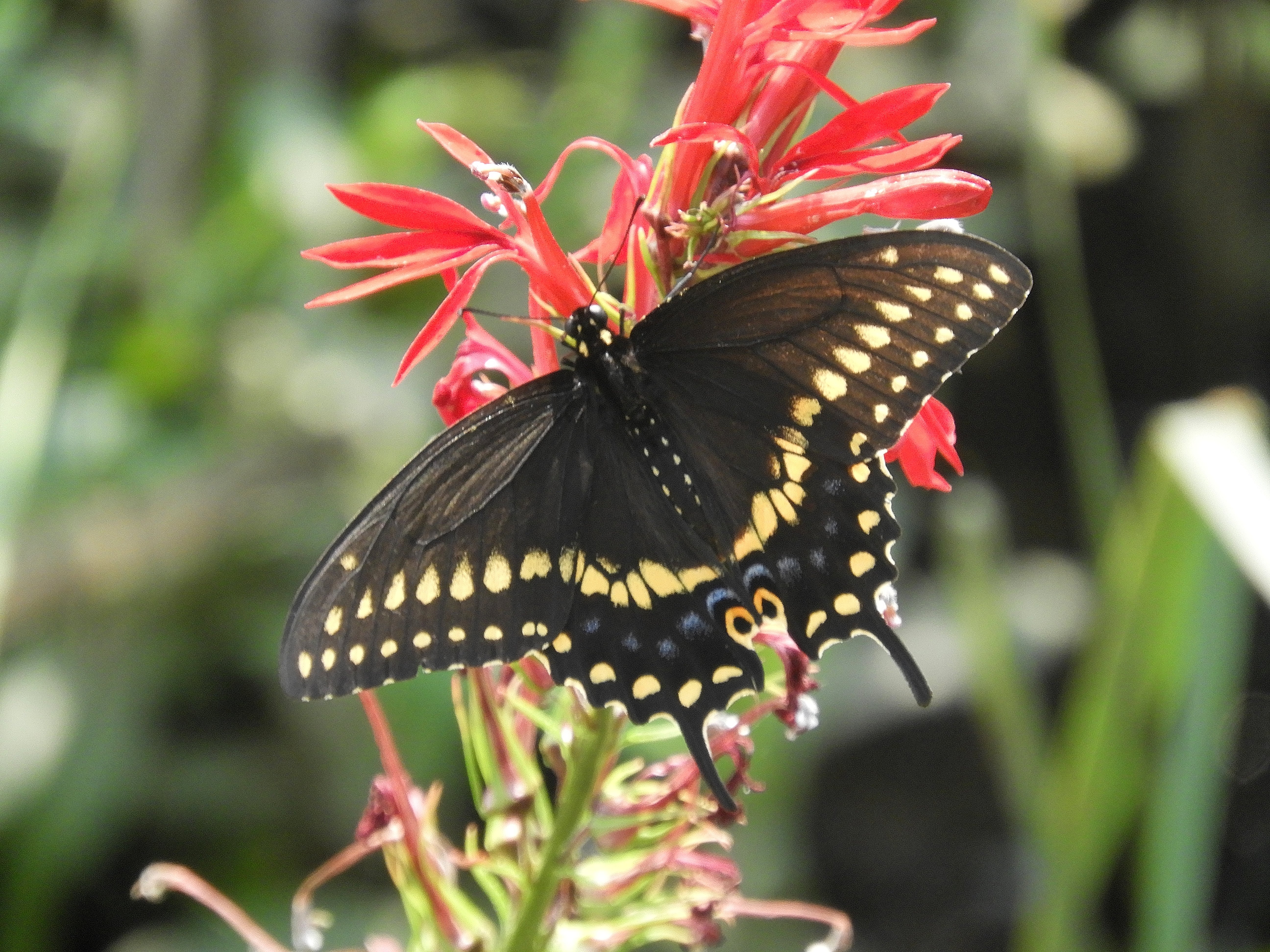 |
| Black swallowtail butterfly (Papilio polyxenes) on cardinal flower (Lobelia cardinalis) |
There were at least two “non-plant” attention-getters: the differential grasshopper (Melanoplus differentialis), a large yellowish insect with black markings, including chevron-like markings on the hind legs; and a yellow garden spider (Argiope aurantia), which makes a zigzag of silk that may act as camouflage or attract prey.
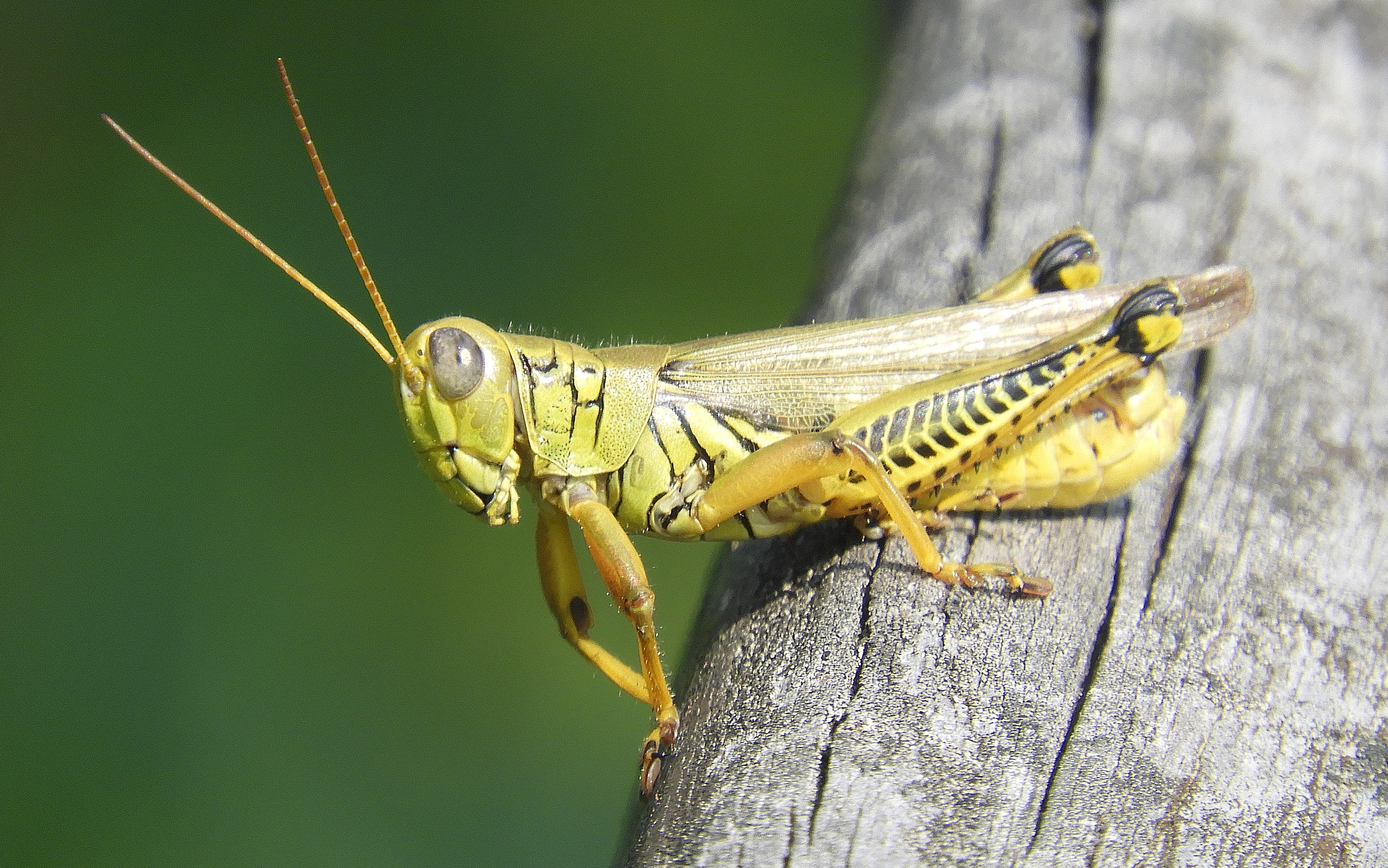 |
 |
|
| Differential grasshopper (Melanoplus differentialis) | Yellow garden spider (Argiope aurantia) |

 Friends of Dyke Marsh, Inc. is a non-profit 501(c)(3) organization.
Friends of Dyke Marsh, Inc. is a non-profit 501(c)(3) organization.